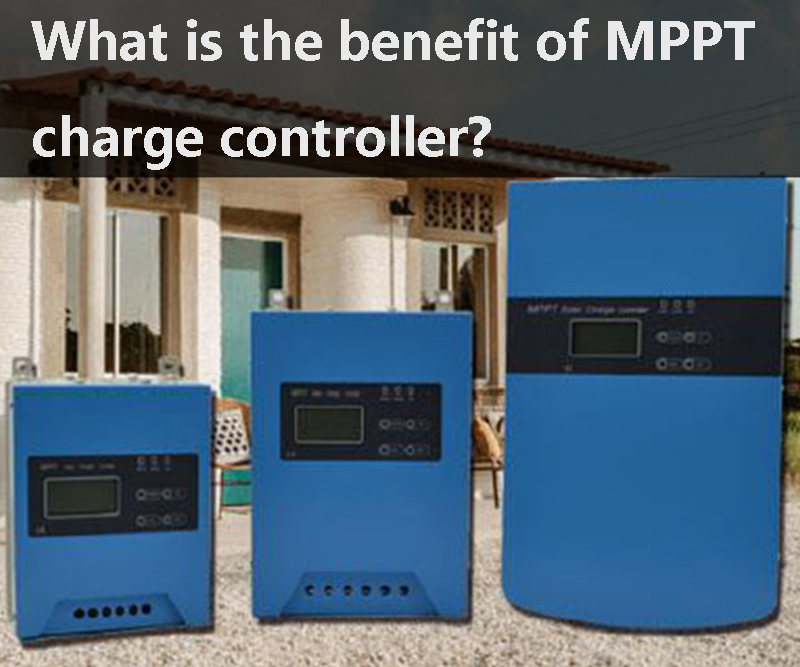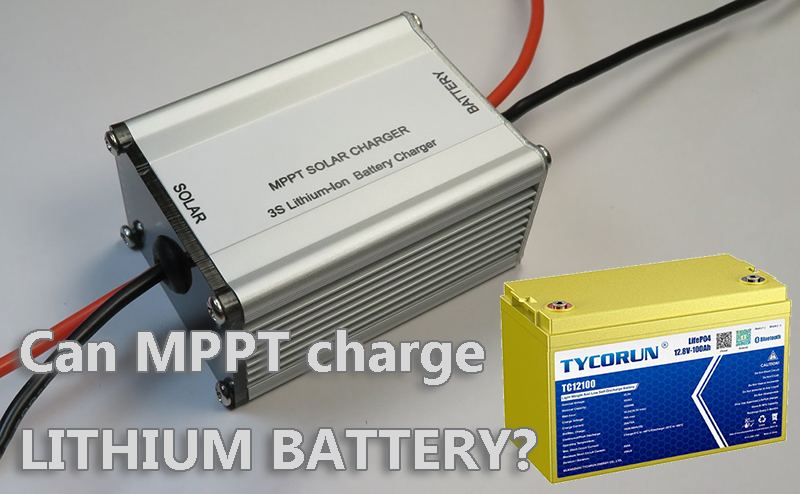Main content:
- What is Maximum Power Point Tracking?
- How do Maximum Power Point Tracking work?
- How is MPPT efficiency calculated?
- How to calculate the number of solar modules per string for household use?
- What does a maximum power point tracker do? How is MPPT achieved?
- What is the difference between charge controller and MPPT?
- What is a MPPT solar charge controller?
- Main features of a MPPT solar charge controller
- What is the benefit of MPPT charge controller?
- How to choose a MPPT solar charge controller for PV module?
- How to set system configuration of MPPT solar charge controller?
- Can MPPT charge lithium battery?
- Which is better MPPT or PWM?
- Conclusion
Maximum Power Point Tracking (MPPT) capabilities are incredibly advantageous to people using renewable energy. They help increase the efficiency of renewable energy sources including solar(commonly used for home energy storage), wind (turbine) and more by reducing waste. You’ll get to understand the following concepts by reading this article to the end:
- What is Maximum Power Point Tracking, and how it functions;
- How to calculate MPPT efficiency;
- The benefits of using MPPT.
1.What is Maximum Power Point Tracking?
MPPT(maximum power point tracking) is the abbreviation of maximum power point tracking, which refers to tracking and controlling the changes of output voltage and current caused by the changes of surface temperature and solar irradiance of the photovoltaic array, so that the array can always maintain the maximum output working state to obtain the automatic adjustment behavior of maximum power output. Simply put, a Maximum Power Point Tracking is a solar charge controller. It is a DC-to-DC converter that matches power between PV solar panels and batteries.
An MPPT reduces wastage by maximizing energy extraction under conditions where batteries in a solar system do not receive maximum voltage from the solar panels. Such conditions are caused by cold and cloudy weather or when the battery is deeply discharged. Long wire runs can also cause voltage drops from the solar panels to the battery - unless you integrate large wires. However, large wires can be a bit costly. Integrating MPPT into your solar system is essential because it creates maximum power generation regardless of weather conditions.
2.How do Maximum Power Point Tracking work?
Maximum Power Point Tracking works by checking the current and voltage variation of solar panels. It then compares it with your solar system battery’s voltage. The MPPT then fixes your solar panels' best power output to match your battery's voltage. In other words, it optimizes the current at which your solar batteries charge to increase efficiency. In addition to charging your solar batteries by optimizing current from solar panels, it can also power devices directly connected to the solar battery.
As shown in the above figure, as the surface temperature of the photovoltaic module and the local solar radiation constantly change, the inverter can continuously catch up with and track this change through the combination of its own software and electrical hardware, so as to maximize the output of the photovoltaic module.
3.How is MPPT efficiency calculated?
Calculating the efficiency of Maximum Power Point Tracking can be done by dividing the output power your solar panel produces by the expected output power it should produce. For inverters using open-loop current sensors, the limit efficiency of Maximum Power Point Tracking is only 97%, while for inverters using closed-loop current sensors, the limit efficiency of Maximum Power Point Tracking can reach 99.5%. Consider the following example: If you have a solar panel producing 2 kW at two kW/m² and 50 C and your MPP has extracted 1,900W, the efficiency calculations will be: 1,900/2,000 x 100 = 95% efficiency. It is vital to ensure that your units are in watts (W). Remember, there is practically no device that is 100% efficient.
4.How to calculate the number of solar modules per string for household use?
Three parameters need to be confirmed before calculating the number of components. First, confirm the minimum and maximum temperature of the project site; Secondly, confirm the maximum input voltage and MPPT voltage range of the inverter; Finally, confirm the peak power, open circuit voltage temperature coefficient and peak power temperature coefficient of the solar module. After determining the above, we can calculate the optimal configuration of each access string. When it comes to inverters, you may want to know about the inverter industry and its leading companies, the top 10 inverter battery best companies in the world on our website will provide you with all the details you wonder.


- N refers to the number of components per string (integer);
- Vdcmax is the maximum DC voltage of the inverter;
- Vmpptmax is the maximum DC MPPT voltage of the inverter;
- Voc is the open circuit voltage of the component;
- Vmpptmin is the minimum DC MPPT voltage of the inverter;
- KV (kV `) is the open circuit voltage temperature coefficient of the component;
- Vpm is the component peak voltage;
- t ` is extreme high temperature of the site environment;
- t is extreme low temperature of the site environment.
5.What does a maximum power point tracker do? How is MPPT achieved?
A Maximum Power Point Tracker is a device that has an embedded algorithm. The algorithm helps the tracker track power measurements and adjusts accordingly to ensure maximum power transfer from solar panels to battery storage. MPPT is achieved by sampling solar panel output and then applying the correct load for maximum power. It, therefore, means that you'll have to integrate an MPPT tracker into your solar system. Otherwise the voltage of the electricity generated directly from the solar panel may be too high and may burn out the battery.
6.What is the difference between charge controller and MPPT?

MPPT is a kind of Charge Controller and another Charge control device is PWM (Pulse Width Modulation). The primary difference between a PWM charge controller and a MPPT is that the MPPT devices are more efficient. A PWM charge controller decreases solar panel voltage to the required voltage to charge your solar battery. On the other hand, an MPPT works by matching your solar panel's resistance. It then charges your solar battery by converting the extra voltage into the current. In other words, MPPT works like a smart DC-to-DC converter.
7.What is a MPPT solar charge controller?
① Main features of a MPPT solar charge controller
There are four primary features of a solar charge controller:
- An MPPT solar charge controller detects variation in the current-voltage characteristics
- Reduces complexity of the system and enhances efficiency
- Usable in other renewable sources of energy - for example, wind power turbines, water turbines, etc.
- Forces solar panels to operate at a voltage close to their maximum power point for maximum power drawing.
② What is the benefit of MPPT charge controller?
Here are the three primary benefits of using MPPT charge controllers:
- Allows you to use solar panels that produce more voltage than your battery bank. You'll find this advantageous, especially during cold weather seasons.
- Minimizes wastage by increasing charging efficiency.

③ How to choose a MPPT solar charge controller for PV module?
It would be best to choose your MPPT solar charge controller by ensuring that it is large enough to handle the amount of current (and power) your solar panels produce.
④ How to set system configuration of MPPT solar charge controller?
The solar panels are directly connected to a solar charge controller. The MPPT solar charge controller can charge your solar battery system (generally in 12V, 24V, and 48V). The battery is then connected to an inverter which supplies power to AC loads. You can connect a DC load directly to your MPPT solar charge controller. Remember, all MPPT solar charge controllers are smart DC to DC converters.
8.Can MPPT charge lithium battery?
Yes, MPPT can charge lithium rechargeable batteries. Recent studies show that MPPTs are better used with lithium-ion batteries than with other battery types, for example, lead-acid.

9.Which is better MPPT or PWM?
MPPT is a better charge controller, as it offers more efficiency (up to 30% more) in charging than PWM. In addition, MPPT is more modern than PWM. However, it would be best to mention that MPPTs are more expensive than PWM.
10.Conclusion
Maximum Power Point Tracking (MPPT) capabilities are incredibly advantageous to people using renewable energy. Maximum Power Point Tracking is a solar charge controller. It is a DC-to-DC converter that matches power between PV solar panels and batteries. Maximum Power Point Tracking works by optimizing the current and voltage at which your solar batteries charge to increase efficiency under different conditions. Such conditions may be during cold weather, such as winter, or even the rainy season. Most modern MPPTs have an efficiency of 93% - 97%.
The primary difference between a PWM charge controller and MPPT is that the PWM charge controller decreases solar panel voltage to the required voltage needed to charge your solar battery. An MPPT works by matching your solar panel's resistance. It then charges your solar battery by converting the extra voltage into the current. MPPTs are recommended for charging lithium ion solar battery. An MPPT is better than a PWM as it is more modern and more efficient in charging solar batteries.
Related article: top 5 perovskite solar cell companies, best lithium battery for off-grid solar















